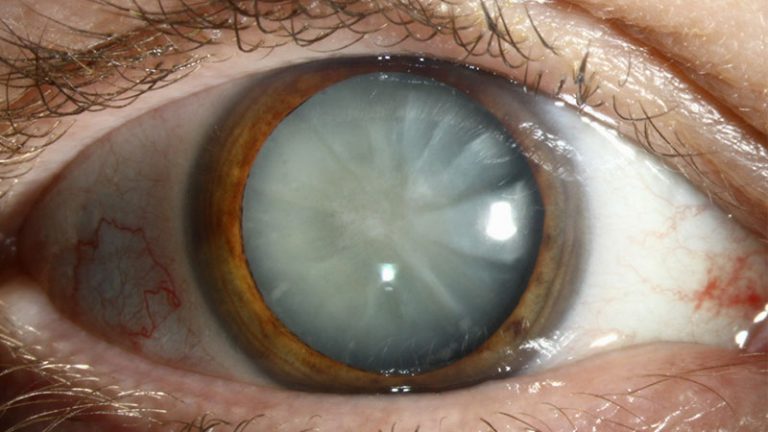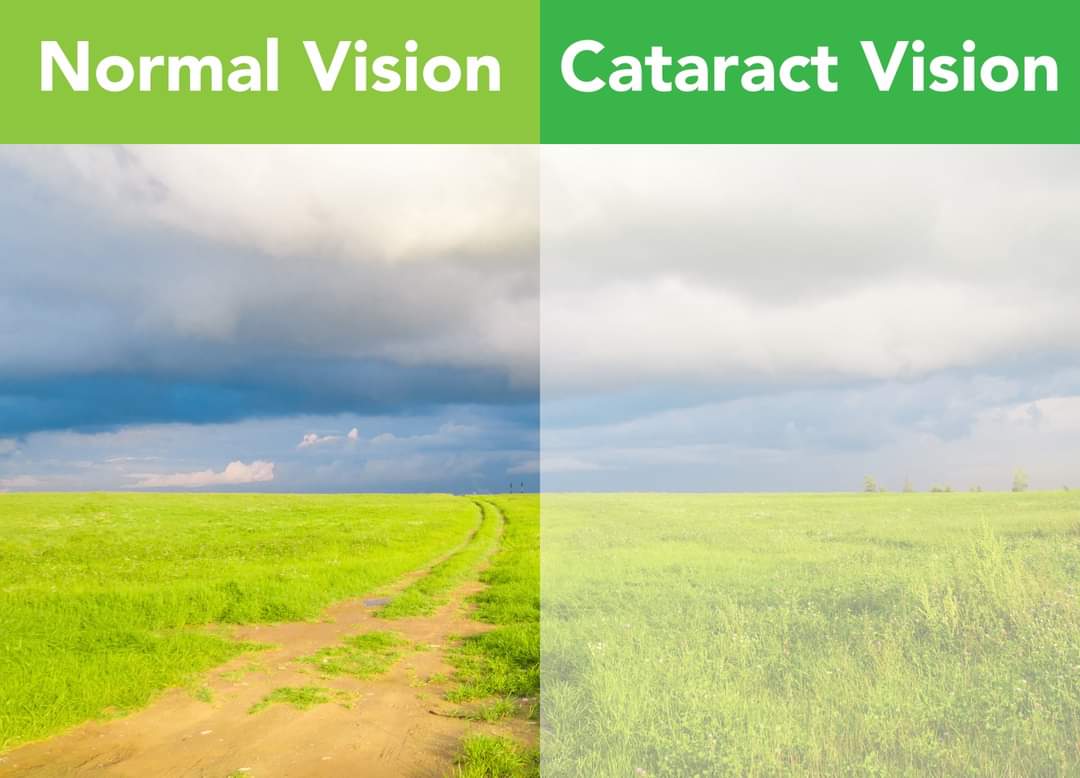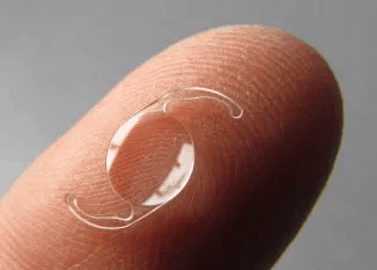Cataract is clouding of the lens in our eye. When clouding occurs, it keeps the light rays from passing through the lens and focussing on the retina. The retina is a thin layer of nerve tissue that lines the inside of the back of the eye and is sensitive to light. A cataract happens when the protein in the lens of the eye starts to break down and clump together . This causes the lens to become cloudy and affects the eyesight.
For those who have cataract, seeing through cloudy lenses is like looking through a frosty or fogged up window. Most cataracts develop slowly and progresses over time and will eventually affect the vision. Cataract usually happens in both eyes, but not always at the same rate.
Causes of cataract
Cataract primarily develops as a result of aging. Other factors that can contribute to cataract formation include:
Genetics : A family history of cataract can increase risk.
Medical condition : Diabetes, hypertension are associated with a higher likelihood of developing cataracts.
Metabolic conditions : Hypocalcemia, Wilson‘ s disease and myotonic dystrophy
Lifestyle : Prolonged exposure to UV light, smoking and excessive alcohol consumption can elevate risk.
Medications : Long term use of corticosteroids and certain medications like phenothiazides, amiodarone and statins may contribute to cataract development
Trauma : Perforating injury, blunt trauma, electric shock, ultraviolet radiation, Ionizing radiation and chemical injuries.
Ocular conditions : Uveitis and retinitis pigmentosa


Symptoms
Cataracts typically develop slowly , and many people may not notice the early symptoms.
Common signs include:
Blurring of vision which is gradual and painless.
Difficulty seeing at night
Glare and halos
Frequent changes in prescription of glasses and contact lenses

Diagnosis
An eye care professional can diagnose cataract through a comprehensive eye examination. This may include visual acuity tests, refraction, slit lamp examination and retinal examination.
Refraction and visual acuity testing
This test assesses the sharpness and clarity of the vision. Each eye is tested individually for the ability to see letters of varying sizes.
Slit lamp examination
The special slit lamp microscope that can be used to look at the structures that are at the front of the eye.
Retinal examination
Dilatation of the eye is an important part of a retinal examination to view the inside of the eye. Once dilated , each eye is examined using a special magnifying lens that provides a clear view of important structures at the back of the eye which includes the retina, macula and optic nerve.
Treatment
Cataract extraction is one of the most commonly performed surgeries in the world. Successful surgeries lead to a marked improvement of vision and quality of life. In general , the visual improvements from cataract surgery will benefit multiple domains of life including emotional and social life. The treatment of cataracts depends on the severity of the condition. Early stage cataract may not require immediate intervention; lifestyle changes and updated eyewear prescriptions may suffice .However if vision impairment interferes with daily activities, surgery is the most effective treatment.
Surgical options :
Phacoemulsification -The most common procedure where ultrasound waves break up the cloudy lens, which is then suctioned out followed by an artificial lens is implantation.
Extracapsular surgery – In more advance cases, the lens is removed in one piece ,followed by the insertion of an artificial lens.

Prevention
While not all cataract can be prevented, certain lifestyle choices may help reduce risk:
Wear UV-blocking sunglasses when outdoors.
Maintain a healthy diet rich in antioxidants including fruits and vegetables
Avoid smoking and limit alcohol consumption
Manage chronic health conditions effectively
Cataracts are a prevalent condition, particularly among the elderly, but advancements in treatment have made it possible for many to regain clear vision. Regular eye examination is crucial for early detection and management.
Regardless of how good your eyesight is, scheduling regular eye exams is an essential way to protect overall health and wellness. Visit https://www.kpjhealth.com.my/cfs/cataract and browse through KPJ Centre For Sight social media pages: Facebook, Instagram and TikTok for more info.
Article by: Dr Hemalatha Chandrakanthan, Consultant Ophthalmologist MBBS (Manipal), Ms Ophthal (USM)

This content is provided by KPJ Centre For Sight.
The views expressed here are those of the author/contributor and do not necessarily represent the views of Malaysiakini.
Interested in having your press releases, exclusive interviews, or branded content articles on Malaysiakini? For more information, contact [email protected] or [email protected]

